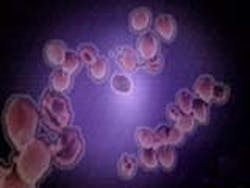Canadians Believe Drug Sales May Offer Early Warning for Tainted Water Outbreaks
Collecting drug data from pharmacies and emergency rooms could give public health officials a heads-up to tainted water problems.
In 2001, 7,000 people in North Battleford, Sask. got sick after drinking the city's water because of a cryptosporidium outbreak. Demand for anti-diarrheal medication skyrocketed.
Now, a pilot project underway in Winnipeg is showing how collecting drug data may provide an early warning of water problems.
Information about outbreaks is typically compiled from confirmed lab results, according to Jeff Aramini, a senior epidemiologist with the Public Health Agency of Canada.
If health authorities rely on confirmed tests results alone, it can take days or weeks for them to discover the extent of a water contamination problem.
In the case of North Battleford, had the drug data from pharmacies and emergency rooms been collected quickly, the information could have been used to prevent people from getting sick.
"Had we been monitoring the sale of anti-diarrheal and anti-nausea medication in real time, we probably would have picked up the outbreak two to three weeks before the boil-water advisory went out," said Aramini.
Annie Laing, one of the people who got sick from drinking contaminated water in 2001, said she wishes the pilot project had been in wide use back then.
"If the early warning had been out, I would have been aware of it," said Laing. "I would have taken further precautions which means I wouldn't have ended up with the surgery that has basically destroyed my life."
The pilot project is still in its early stages. Aramini said if it's successful, the system could be applied nationwide.
Source: CP
